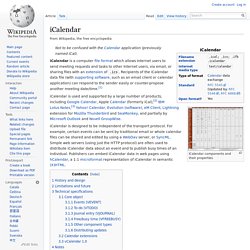

New 20 Best TED Talks for Students of Social Media. If you’re trying to get up to speed quickly onthe latest thinking about social media, here’s a few quick videos from the thought leaders who’ve spoken at TED.

In 2011, we’re all pretty familiar with the impact of social media on the news. When a plane crashed into New York’s Hudson River in 2009, it was a Twitter user who broke the news. And social media frequently makes news, including when it accelerated the uprising in Egypt this year. But back in 2005, social media was not as prominent as it is today, and it took a tsunami for social media to earn its status as an equal player in news-gathering. In this talk, James Surowiecki discusses the 2005 tsunami, and what he believes is the pinpointed moment that social media really showed off what it could do in the news, as YouTube videos, blogs, IMs and texts shared the news and personal stories from the storm. Howard Rheingold: The new power of collaborationThe beauty of social media is that it’s not created by any one person.
Library 2.0. Library 2.0 is a loosely defined model for a modernized form of library service that reflects a transition within the library world in the way that services are delivered to users.

The focus is on user-centered change and participation in the creation of content and community.[1] The concept of Library 2.0 borrows from that of Business 2.0 and Web 2.0 and follows some of the same underlying philosophies. This includes online services like the use of OPAC systems and an increased flow of information from the user back to the library. With Library 2.0, library services are constantly updated and reevaluated to best serve library users.
Library 2.0 also attempts to harness the library user in the design and implementation of library services by encouraging feedback and participation. Overview[edit] The term "Library 2.0" was coined by Michael Casey on his blog LibraryCrunch as a direct spin-off of the terms Business 2.0 and Web 2.0. Key principles[edit] Concerns and Considerations[edit] Library 2.0. By Michael E.

Casey and Laura C. Savastinuk on May 21, 2010 Service for the next-generation library Libraries are changing. Funding limits and customer demands are transforming staffing levels, service models, access to resources, and services to the public. Enter Library 2.0. The heart of Library 2.0 is user-centered change. While not required, technology can help libraries create a customer-driven, 2.0 environment. Tapping new users through the “long tail” In the current library world—particularly in public institutions—we are accustomed to focusing our services on those customers we already reach. No matter how hard we try, many of the services we offer are not being used by a majority of our population. This keeps some traditional customers satisfied, but non-users might be better served if librarians consider what’s called the long tail.
Blogs and wikis are other ways to engage customers and push fresh content to users. Customer as collaborator. iCalendar. iCalendar components and their properties iCalendar is a computer file format which allows Internet users to send meeting requests and tasks to other Internet users, via email, or sharing files with an extension of .ics.

Recipients of the iCalendar data file (with supporting software, such as an email client or calendar application) can respond to the sender easily or counter-propose another meeting date/time.[1] iCalendar is designed to be independent of the transport protocol. For example, certain events can be sent by traditional email or whole calendar files can be shared and edited by using a WebDav server, or SyncML. Simple web servers (using just the HTTP protocol) are often used to distribute iCalendar data about an event and to publish busy times of an individual. History and design[edit] iCalendar data has the MIME content type text/calendar. Actual line feeds in data items are encoded as a backslash followed by the letter n or N (the bytes 5C 6E or 5C 4E in UTF-8). Notes[edit]